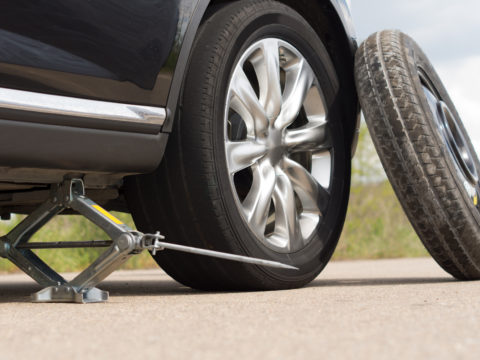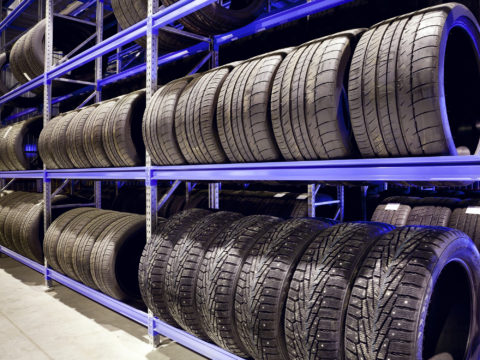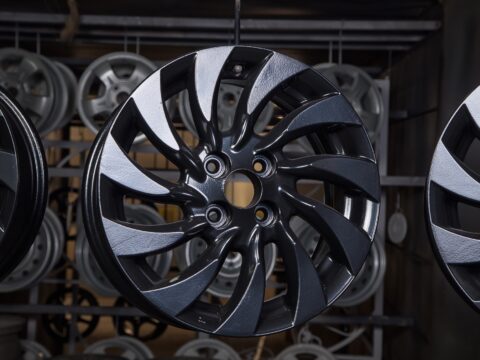Wheel spacers are aftermarket add-ons used to move your vehicle’s wheels farther away from its body. They are lightweight, inexpensive, and easy to install. Wheel spacers are commonly used on vehicles with 4-wheel drive to enhance off-roading capability or street performance.
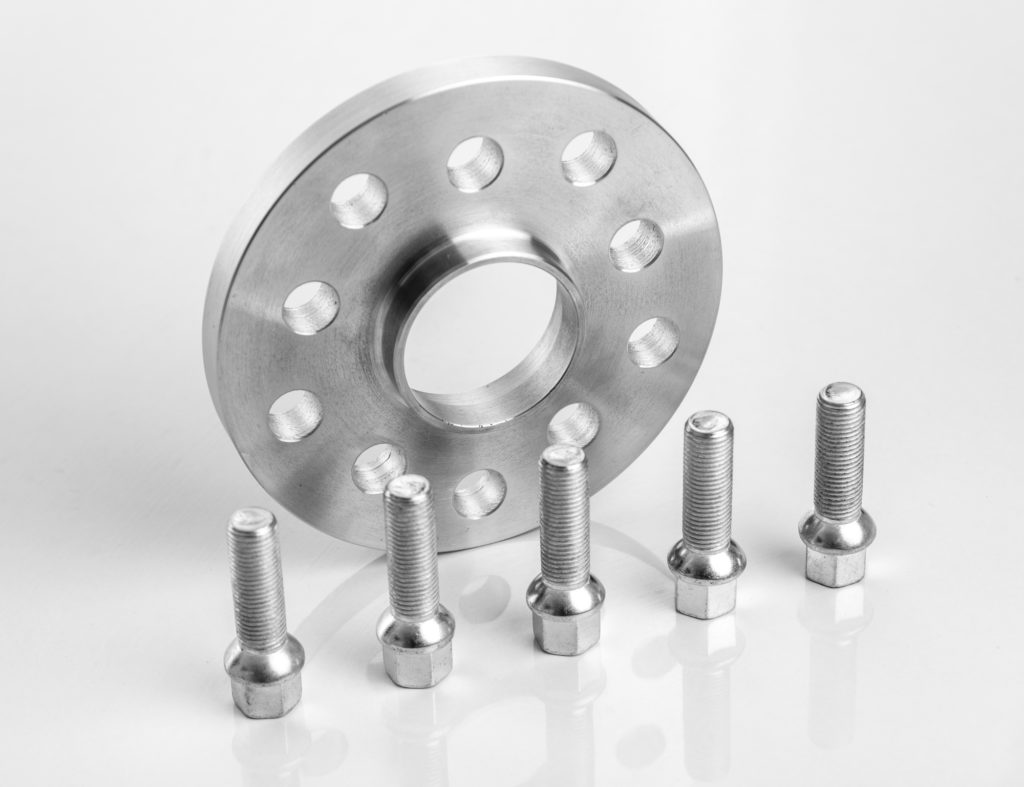
Contents
What is a Wheel Spacer?
A wheel spacer is installed over the holding bracket of the wheel assembly to create more space between the assembly and the wheel itself. After installation, you’ll have a larger gap between the wheel well and the wheel.
There are various sizes of wheel spacers, ranging from 5 mm to 45 mm. The smaller spacers may result in the tire sitting flush with the frame, while the larger ones will push the tires past the frame for a broader base.
Which size you want will depend on the reasons you need a spacer. For example, you may choose to install a wheel spacer because you want your car to have a sleek street look. Or, you may want to enhance your vehicle’s performance because you take it through the most challenging terrain you can handle! It’s all up to you. Wheel spacers can give you the best of both worlds: performance and aesthetics.
What Does a Wheel Spacer Do in a Car?
Wheel spacers create more space between the wheel and the hub assembly. Some vehicles have bulky or wide tires that take up more space in the wheel well. If the tires are too large, they may rub against the wheel well or suspension mechanisms. The spacer solves these issues so that even the biggest tires can clear the wheel well without a problem.
Why Wheel Spacers?
One of the top reasons people choose to install wheel spacers is because they provide better traction in inclement weather. The broader base creates a better grip between the tires and the road. It’s great for people who live in areas with a lot of rain or gravel roads, and it’s also great for those who enjoy off-roading.
Others may want to install wheel spacers because they want a slick street racing appearance. When installing wheel spacers, you can quickly get a polished aftermarket style without investing thousands of dollars in enhancing your vehicle’s performance!
Advantages and Disadvantages of Wheel Spacers
Now that you know what wheel spacers are and why they might be installed on a vehicle, let’s go over their advantages and disadvantages.
Advantages
Let’s take a closer look at the benefits of wheel spacers.
1) Affordable
Wheel spacers are an inexpensive way to enhance your vehicle. Unlike other aftermarket upgrades, you won’t have to spend thousands to achieve the look and performance you want. Costs vary, but you can get a decent set of wheel spacers for under $200.
2) Easy to Install
As long as you have purchased the proper wheel spacer size, you can install it easily. If you can change your tires, you can also tackle this project. You won’t need any additional tools or equipment. Just set aside a little bit of time, and you can get the job done without much hassle!
3) Saves Larger or Bulkier Tires
If you have fitted your vehicle with larger tires, spacers will save your wheels and suspension components from unnecessary wear and tear. Whether you need larger rear wheels to handle harsh road conditions or you just want to improve your vehicle’s overall performance, you can ensure your car sits right and drives safely.
4) Better Handling
When the wheels sit farther apart, this widens the base of your vehicle and increases its stability on the road. It can handle tighter turns and cornering. You will have better traction and grip for increased road performance.
5) Gives Your Vehicle a Stylish Look
While the performance benefits of wheel spacers are undeniable, they’re also helping to give your car a stand-out look. Not everything has to be about function—sometimes, it’s nice to appreciate the beauty of a sleek aftermarket style!
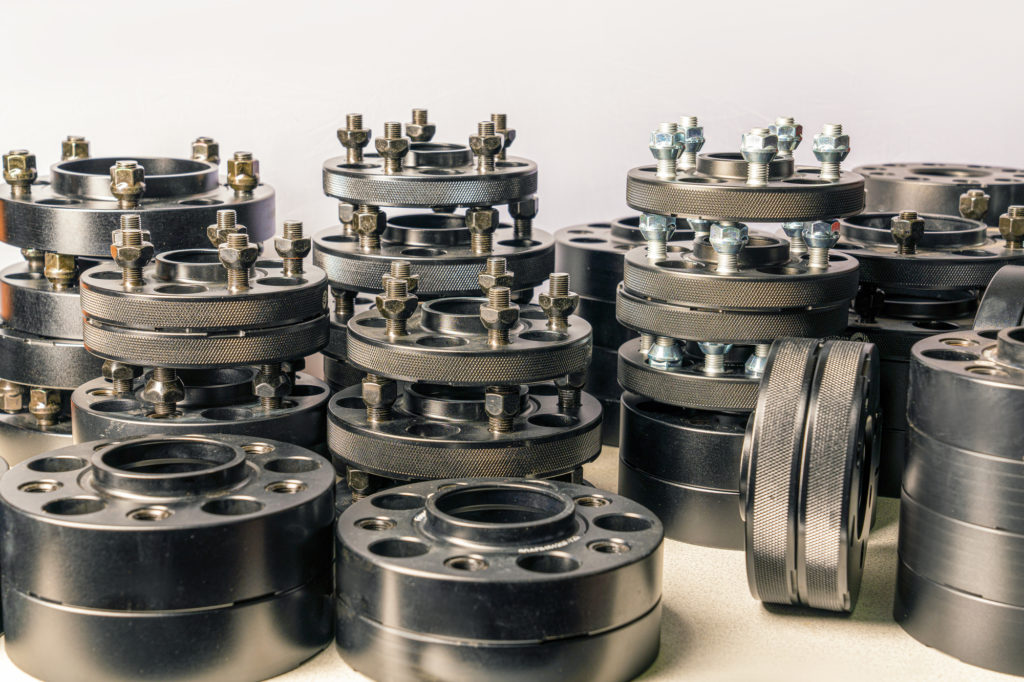
Disadvantages
For some, wheel spacers may have some drawbacks.
1) More Difficult to Steer
When the geometry of your vehicle changes, so do the rest of its mechanics. You’ll find that with the wheels further from the hub, it takes a little bit of extra oomph to steer your vehicle.
2) Prepare for a Bumpy Ride
Along these same lines, the shocks fitted according to factory or stock dimensions will not be appropriately fitted to your new spaced-out wheels. So, you’ll feel more bumps and jolts as you go. Just be aware that while you will have improved grip and traction, the ride will be a bit bumpier.
3) Increased Strain on Suspension Mechanisms
While wheel spacers prevent the wheels from rubbing against any wheel or suspension components, there is still an increased strain on these parts. This increased strain is because the wheels are now farther from the hub, so more stress is distributed along the mechanisms. The wheel ball bearings are usually the first to suffer the effects of this, so be sure to keep an eye on them.
4) Improper Fit
If you do not get properly fitting wheel spacers, you could cause the tires to rub against the fender flare in different areas. An improper fit will cause wear and tear on your tires and could be dangerous if not quickly fixed.
5) Local Vehicle Codes and Regulations
Depending on where you live, it may be illegal to have wheels that are uncovered by fenders or that extend past the wheel wells. These protections are in place because spaced wheels without covers can cause debris to fly further than it would otherwise. If you’re driving in town, this could be dangerous to pedestrians and pets, other vehicles, and property along the side of the road.
So, are Wheel Spacers Necessary in Your Car?
Wheel spacers are an excellent choice for street-focused cars and off-roading vehicles because they help improve performance on more demanding terrains. They are also a great choice for vehicles with larger or bulkier tires and for those who want a sleek, aftermarket look.
They are not necessary for any other types of vehicles by any means. They are simply a choice you can make if your car meets the conditions mentioned above or if you prefer to alter your car’s appearance.

